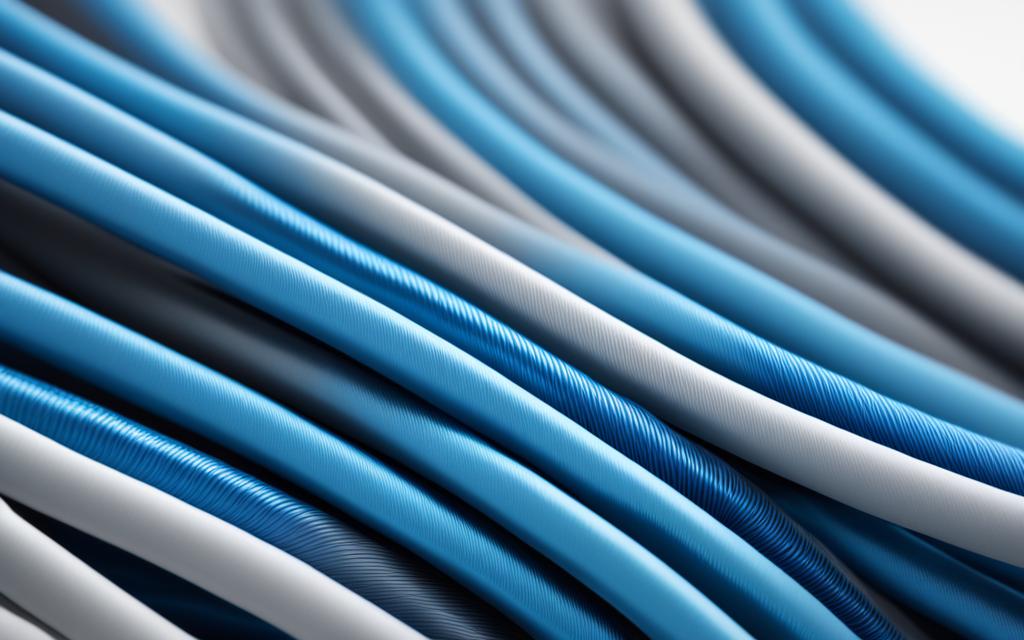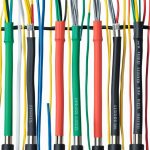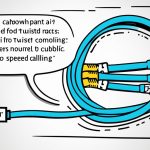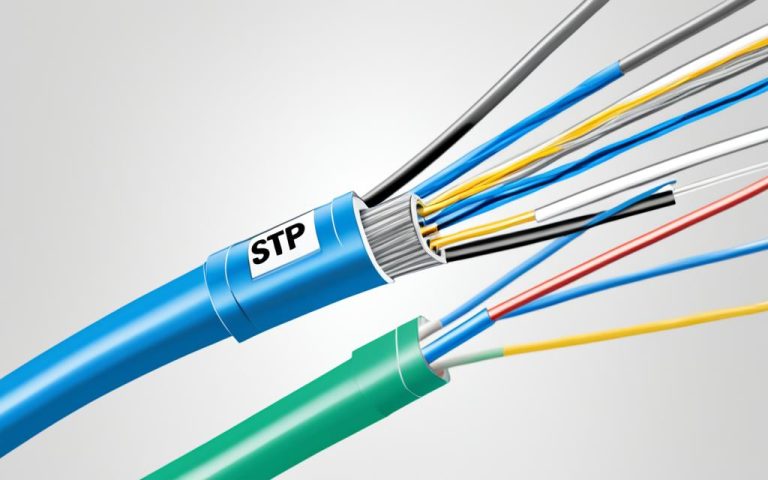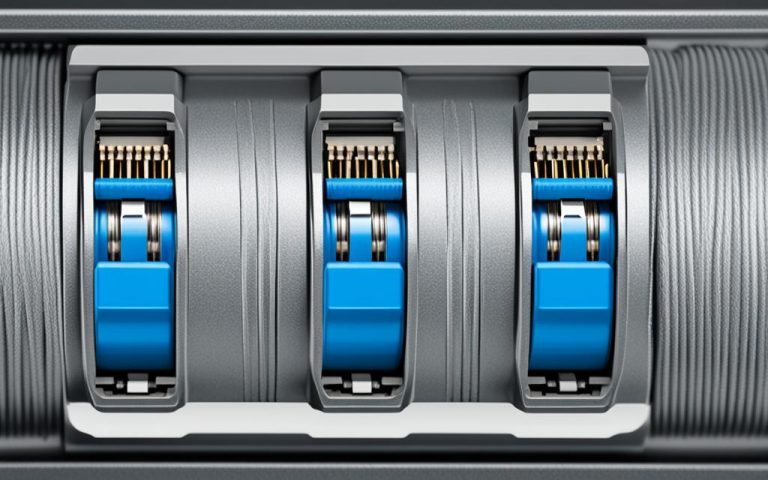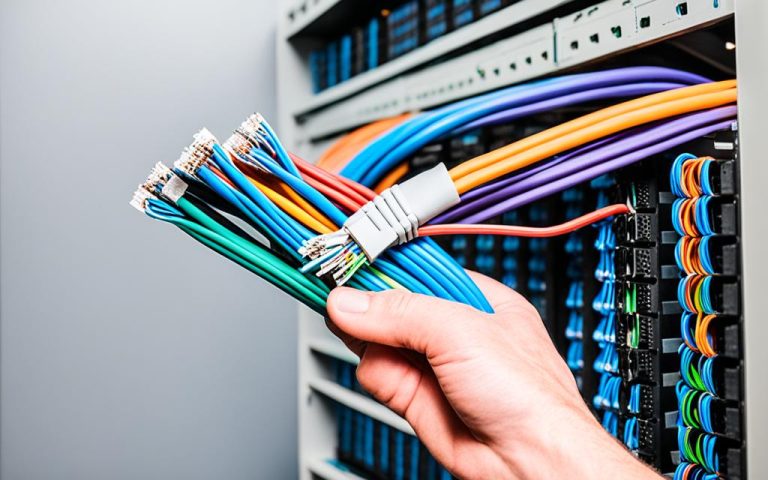Voice over Internet Protocol (VoIP) has revolutionized the way we communicate, offering cost-effective and flexible voice solutions for businesses and individuals alike. However, to fully optimize the performance of VoIP systems, it’s essential to have the right cabling infrastructure in place. Twisted pair cables, specifically designed for carrying voice traffic reliably, are the key to ensuring seamless and high-quality VoIP communication.
Twisted pair cables, such as Cat 5e, Cat 6, and Cat 6a, are the most prevalent option for VoIP implementations. They are engineered to minimize interference and crosstalk, enabling clear and uninterrupted voice transmission. With different categories available, each suited for varying network speeds and bandwidths, these cables provide the flexibility to meet the specific requirements of your VoIP system.
When selecting twisted pair cabling for your VoIP setup, there are a few considerations to keep in mind. The choice between solid and stranded core, shielded and unshielded cables, snagless boots, and plenum ratings can impact the overall performance and reliability of your VoIP system.
In this article, we will explore the different types of cabling used for VoIP implementations, the connectors commonly used in VoIP cabling, the industry standards for VoIP cabling, as well as the best practices for installation and maintenance. By understanding these essential aspects, you will be equipped with the knowledge to optimize your VoIP system and ensure seamless communication.
Types of Cabling Used for VoIP Implementations
When it comes to VoIP implementations, choosing the right cabling infrastructure is crucial for optimal performance. Twisted pair cables and fiber optic cables are the two main types commonly used in VoIP systems.
Twisted Pair Cables
Twisted pair cables are the most common type of cabling utilized in VoIP implementations. They consist of copper wire pairs twisted together, which helps reduce interference and crosstalk issues. Twisted pair cabling is available in different categories, including Cat 5e, Cat 6, and Cat 6a, with each category catering to specific network speeds and bandwidth requirements.
| Cable Category | Speed | Bandwidth |
|---|---|---|
| Cat 5e | 1000 Mbps | 100 MHz |
| Cat 6 | 10,000 Mbps (10 Gbps) | 250 MHz |
| Cat 6a | 10,000 Mbps (10 Gbps) | 500 MHz |
Fiber Optic Cables
Fiber optic cables provide an alternative solution for VoIP systems, especially for long-distance connections. These cables use strands of glass or plastic to transmit data as pulses of light. Fiber optic cables offer several advantages compared to twisted pair cables, including higher bandwidth, longer transmission distances, and immunity to electromagnetic interference.
Connectors for VoIP Cabling
When it comes to VoIP cabling, using the right connectors is essential for seamless communication. There are several common connectors designed specifically for VoIP installations, each serving a unique purpose. Let’s take a closer look at some of the most widely used VoIP cabling connectors:
- RJ11 Connector: The RJ11 connector is commonly used for traditional telephone lines. It features a modular jack that connects standard telephones using a single pair of copper wires.
- RJ45 Connector: The RJ45 connector is the industry standard for VoIP and Ethernet networks. It has 8 pins that correspond to the wire pairs, allowing for high-speed data transmission, including gigabit network speeds.
- LC Connector: The LC connector is commonly used in fiber optic cabling setups. It features a small form factor and is ideal for high-density applications. LC connectors typically use a push-pull latch mechanism for secure connections.
- SC Connector: The SC connector is another popular option for fiber optic cabling. It features a snap-in locking system that provides quick and secure connections. SC connectors are commonly used in single-mode fiber applications.
- ST Connector: The ST connector is commonly used for multimode fiber optic cabling. It features a bayonet-style coupling mechanism that ensures reliable connections. ST connectors are often used in LAN and telecommunications settings.
Utilizing the appropriate connector for your specific VoIP cabling requirements is crucial to ensure optimal performance and reliable communication. By understanding the unique features and capabilities of each connector, you can make informed decisions when it comes to implementing your VoIP infrastructure.
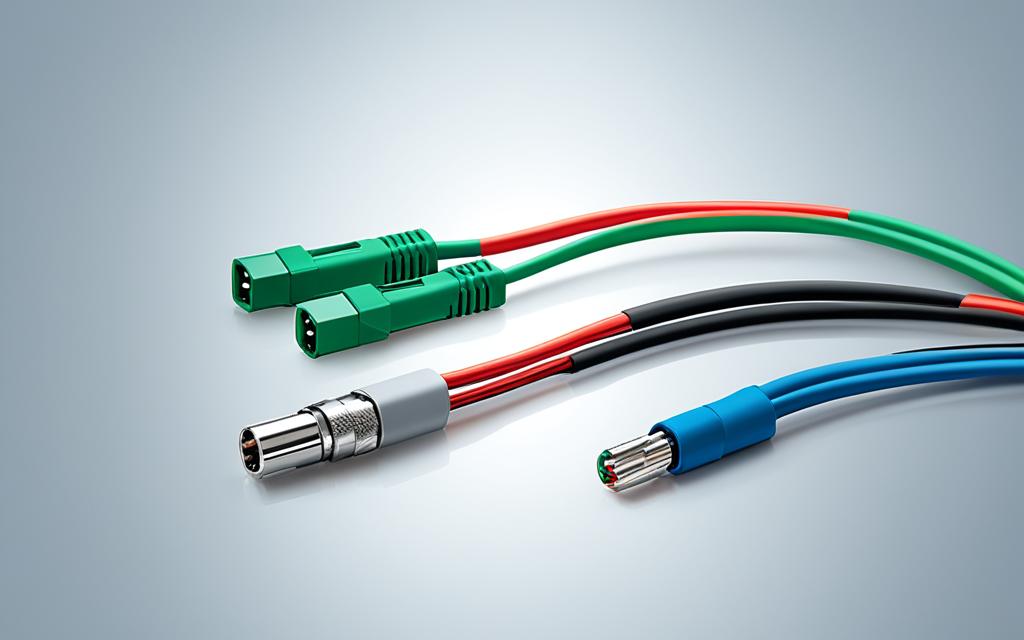
| Connector Type | Main Features | Common Applications |
|---|---|---|
| RJ11 | Standard for connecting telephones | Residential and small office phone lines |
| RJ45 | Standard for VoIP and Ethernet networks | Businesses, data centers, large-scale deployments |
| LC | Small form factor, push-pull latch mechanism | High-density fiber optic installations |
| SC | Snap-in locking system | Single-mode fiber optic applications |
| ST | Bayonet-style coupling mechanism | Multimode fiber optic installations |
VoIP Cabling Standards
When it comes to implementing structured cabling systems for commercial voice and data networks, there are several widely recognized standards that serve as guidelines. These standards ensure the reliable and efficient transmission of voice and data signals, supporting the smooth operation of VoIP systems. Prominent among these standards are ANSI/TIA-568, ISO/IEC 11801, and TIA-569-D.
The ANSI/TIA-568 standard, developed by the Telecommunications Industry Association (TIA), establishes the commercial cabling guidelines specifically for the US market. It covers various aspects of cabling, including copper cabling, fiber cabling, infrastructure, and more. This standard ensures that cabling infrastructure is designed and installed to meet the demands of modern communication systems, such as VoIP.
ISO/IEC 11801 is an international standard that provides guidance for structured cabling systems. Aligned with ANSI/TIA-568, this standard aims to ensure consistent and reliable cabling practices worldwide. By adhering to ISO/IEC 11801, organizations can establish a robust and future-proof cabling infrastructure that supports the efficient transmission of voice and data signals in VoIP implementations.
TIA-569-D, a Telecommunications Infrastructure Standard, focuses on the pathways, spaces, grounding, and administration required for implementing structured cabling systems. It provides guidelines for designing the physical infrastructure necessary to support the cabling infrastructure defined by ANSI/TIA-568. Adhering to TIA-569-D ensures that the physical environment supports the optimal performance of VoIP systems.
By following these industry standards, organizations can ensure that their cabling infrastructure meets the required specifications for VoIP implementations. This adherence to standards not only promotes compatibility and interoperability but also helps in maintaining system performance and minimizing downtime.
Comparison of VoIP Cabling Standards
| Standard | Description |
|---|---|
| ANSI/TIA-568 | US commercial cabling guidelines covering copper and fiber cabling |
| ISO/IEC 11801 | International guidance for structured cabling, aligned with ANSI/TIA-568 |
| TIA-569-D | Telecommunications Infrastructure Standard covering pathways, spaces, grounding, and administration |
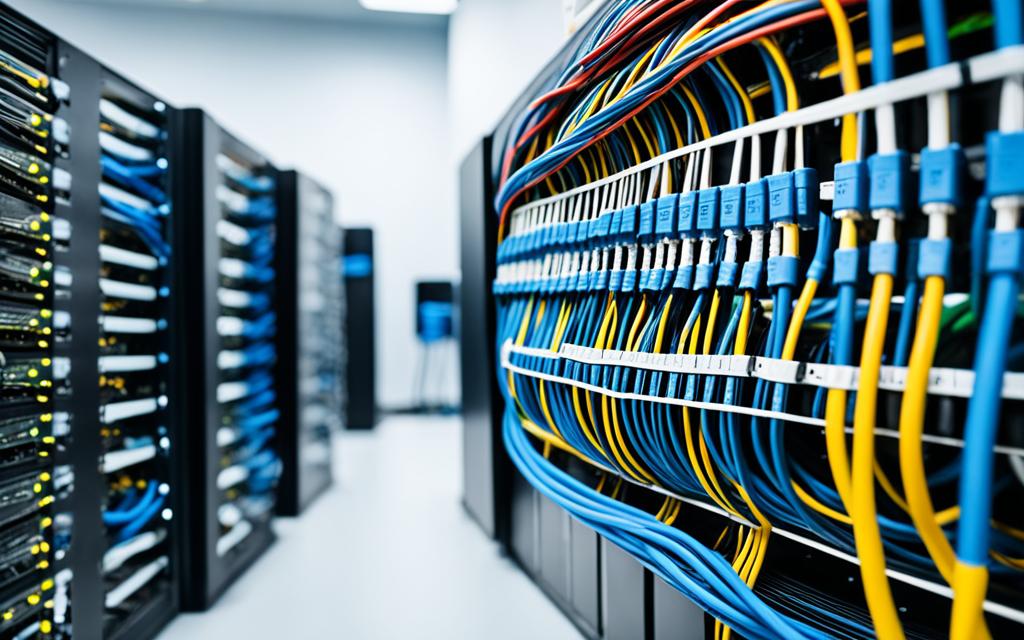
Implementing VoIP cabling standards ensures the reliability and performance of the cabling infrastructure that supports VoIP systems. By complying with ANSI/TIA-568, ISO/IEC 11801, and TIA-569-D, organizations can build a robust and future-proof infrastructure that facilitates seamless communication and enhances the overall effectiveness of their VoIP implementations.
VoIP Cabling Installation and Maintenance Best Practices
Proper installation and maintenance of VoIP cabling are critical for ensuring reliable and high-quality VoIP service. By following best practices, businesses can optimize their VoIP communication and prevent issues that may affect call quality and system performance. Here are some essential best practices to consider:
- Work with Certified Professionals: When setting up VoIP cabling for your business, it is advisable to collaborate with certified professionals experienced in VoIP installations. They possess the expertise to ensure proper cabling layout, adherence to industry standards, and efficient cable management.
- Follow Manufacturer Guidelines: Manufacturers provide specific guidelines on cable installation, including recommendations for cable bending radius and tension. Adhering to these guidelines helps prevent potential signal degradation or damage to the cables, ensuring optimal performance and longevity.
- Use Velcro or Gentle Fasteners: Instead of overtightening cable ties, use velcro straps or other gentle fasteners to secure cables. This prevents excessive pressure on the cables, reducing the risk of signal interference or damage.
- Neatly Dress and Label Cables: Organizing cables in an orderly and labeled manner simplifies troubleshooting and maintenance. Use cable ties or cable management solutions to keep cables neatly arranged and clearly label them at patch panels, ensuring easy identification and efficient cable management.
- Avoid Interference Sources: When planning the path for VoIP cabling, it is crucial to avoid running cables close to power lines or fluorescent lighting fixtures. These sources can introduce electrical interference and negatively impact signal quality. Keeping the cabling away from such sources helps ensure reliable and clear communication.
- Proper Placement: Instead of laying cabling directly on ceilings, it is recommended to place them inside wall cavities or cable trays. This protects the cables from potential damage and minimizes their exposure to environmental factors, enhancing their longevity and performance.
By adhering to these best practices, businesses can maximize the benefits of their VoIP systems and minimize the risk of issues that can affect call quality and system reliability.
Conclusion
VoIP systems provide businesses with cost savings and flexible communication options. However, to optimize their performance, it is crucial to have the right cabling infrastructure in place. Twisted pair cables, such as Cat 5e, Cat 6, and Cat 6a, are the most common and recommended options for VoIP implementations. These cables are designed to reduce interference and crosstalk issues, ensuring clear and reliable voice communication.
In addition to twisted pair cables, fiber optic cables are also used for VoIP systems, especially for long-distance connections. Fiber optics provide high-speed data transmission, making them ideal for businesses with extensive networking needs.
To ensure seamless VoIP communication, it is important to follow cabling standards such as ANSI/TIA-568 and ISO/IEC 11801. Using the appropriate connectors, such as RJ45, and implementing best installation and maintenance practices are also essential. By adhering to these guidelines, businesses can enjoy reliable and high-quality VoIP communication.
In conclusion, optimizing VoIP systems relies on the proper selection, installation, and maintenance of cabling infrastructure. Twisted pair cables and fiber optic cables play a crucial role in achieving clear and reliable voice communication. By following industry standards and best practices, businesses can maximize the benefits of VoIP and enhance their overall communication capabilities.
FAQ
What are the benefits of using twisted pair cables for VoIP systems?
Twisted pair cables reduce interference and crosstalk issues, ensuring reliable and high-quality VoIP communication.
What types of twisted pair cables are recommended for VoIP implementations?
Cat 5e, Cat 6, and Cat 6a are the most common and recommended options, suited for different network speeds and bandwidths.
What other types of cables are used for VoIP systems?
Fiber optic cables are also used, particularly for long-distance connections.
What connectors are commonly used for VoIP cabling?
The RJ45 connector is the standard for VoIP and Ethernet networks, while the RJ11 connector is used for standard telephones with a single pair of copper wires.
Which standards govern VoIP cabling systems?
The ANSI/TIA-568 standard provides guidelines for commercial cabling in the US, while ISO/IEC 11801 offers international guidance for structured cabling. TIA-569-D covers infrastructure implementation.
What are some best practices for VoIP cabling installation and maintenance?
Best practices include working with certified professionals, following manufacturer guidelines for cable bending and tension, using gentle fasteners, neatly dressing and labeling cables, avoiding interference sources, and implementing proper cable placement.
How can twisted pair cables optimize VoIP systems?
Twisted pair cables, such as Cat 5e, Cat 6, and Cat 6a, reduce interference and crosstalk issues, ensuring reliable and high-quality VoIP communication.

